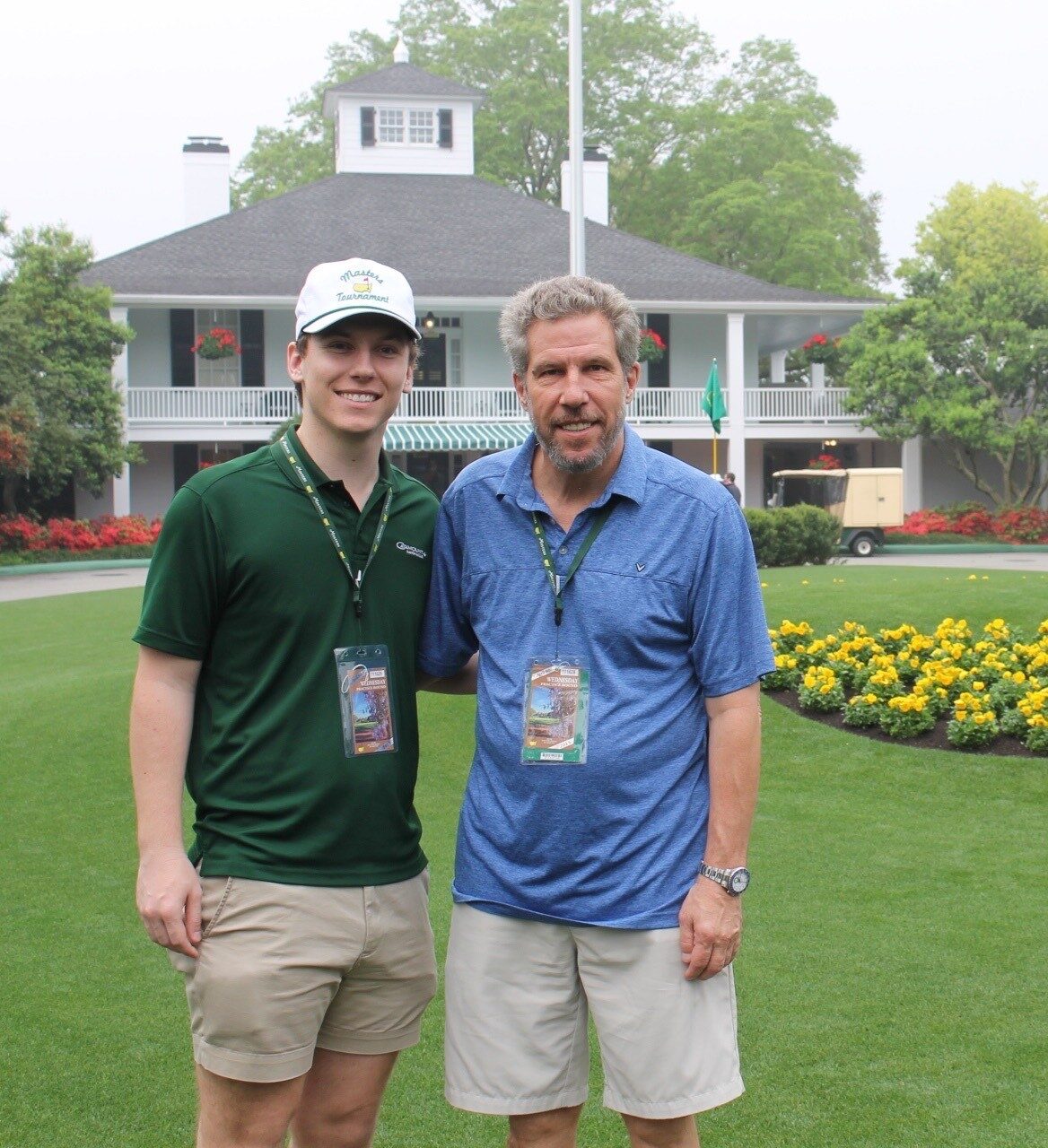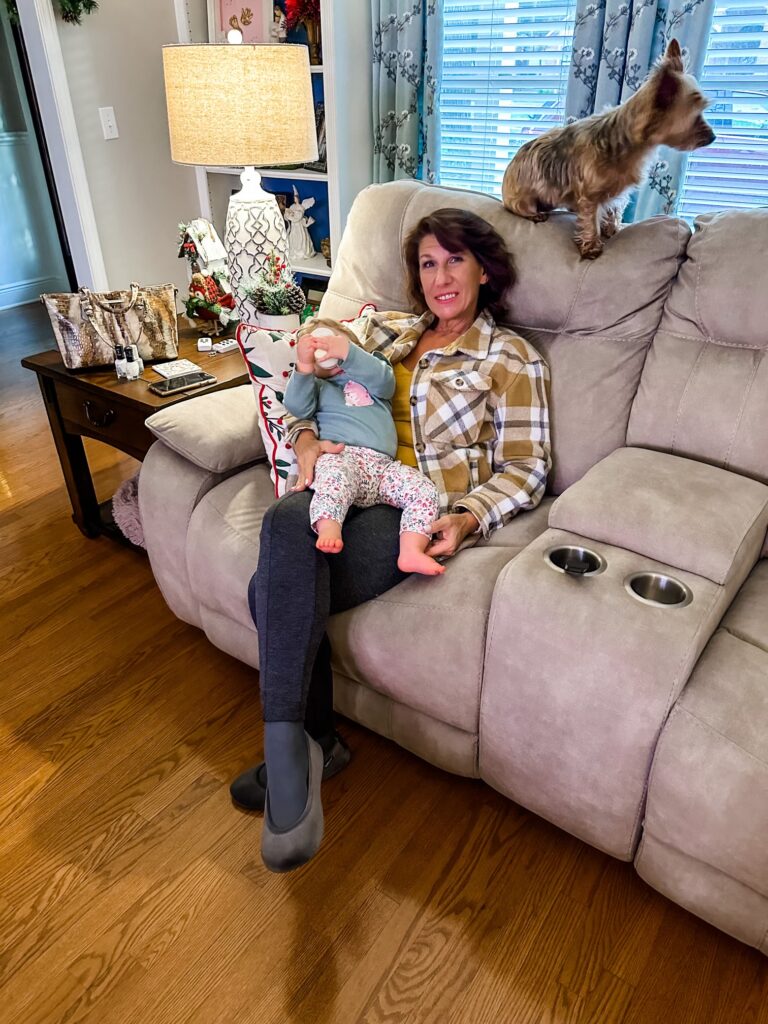
The Legacy
April 11, 2024
This is a guest post by Christopher Wood, Jr, son of the KCA’s late Board Chair and friend, Dr. Christopher…
Read More
By D’Ann George, PhD, Medical Writer
While Chris Jonas grappled with the discovery of new tumors from her kidney cancer, Hurricane Florence was flinging its fury at her hometown of Morehead City near the coast of North Carolina.

“I actually felt a tumor in my neck. I felt it growing. I was desperate to get up to [Duke Cancer Institute], but I couldn’t for almost a month because we were waiting for water to recede. There was so much destruction,” she said.
At the time, during the fall of 2018, Jonas was 50 years old and two years out from a nephrectomy. She had tried two standard-of-care therapies and a combination of nivolumab and ipilimumab, at that time a new immunotherapy combination for her type of kidney cancer, clear cell renal cell carcinoma (ccRCC). None of these stopped her tumors from growing.
“I was feeling so dejected that I was now worse than I was before,” she recalls. “I was really scared that stuff just wasn’t going to work for me.”
But when the flood waters finally receded, Jonas found a therapy that did work — cabozantinib (sold as Cabometyx by Exelixis), a TKI inhibitor, which works by blocking tumor blood vessel growth.
Her tumors shrank a little. After a dose escalation, they shrank more.
“I was very excited. I was elated,” she said.
The treatment had side effects, however, that began to take their toll after about a month.
“I had vomiting and diarrhea to the point that when I ate something, within 30 minutes I was on the toilet,” she said. Her weight dropped precipitously.
She remembers her medical oncologist at Duke, Dr. Daniel George, suggesting that a change in dosing could help with side effects. George is a kidney cancer expert and chair of the Medical Steering Committee at the Kidney Cancer Association.
“He was always asking how I’m feeling, how I’m doing. He was trying to get me to slow down [on the cabozantinib]. But I guess when you’re in the middle of it, you don’t realize how much weight you’re losing or how weak you’re getting,” she said.
“I did not want to stop taking [cabozantinib]. Even though it was making me extremely sick. I did not want to do something different because I was getting shrinkage and I hadn’t gotten shrinkage before.”
“Even though it was making me extremely sick. I did not want to do something different because I was getting shrinkage and I hadn’t gotten shrinkage before.”
Jonas’s initial reluctance to change her dose mirrors the feelings of many people who find a treatment that counteracts their cancer, says Dr. Walter Stadler, a medical oncologist and kidney cancer expert at the University of Chicago.
Their fear that a dose reduction might lessen the effectiveness of their treatment is not wrong, said Stadler.
“There is at least some evidence that dose intensity matters. In other words, there is some data that higher doses might have better efficacy and a better impact against cancer than lower doses,” he said. “The problem with [the maximum dose] approach is that these drugs are [often] used on a much more chronic basis, not only for months, but in some situations for years. And, what might be considered mild or modest acute toxicities [on a short term basis] are really quite debilitating when experienced on a chronic basis.”
In the past, the traditional way of dealing with toxicities like the kind that Jonas experienced was to reduce the dose, said Stadler.
“If you’re having intolerable toxicities – intolerable defined by the patient – [the oncologist would] give a lower dose of the drug. That’s what’s in the official FDA label.”
But what Stadler and other leading oncologists recommend today is that people take a break completely from TKI-inhibitors like cabozantinib.
One reason for this recommendation is that most people can recover from their toxicities, enabling them to resume their full dose once the break is over. Most importantly, the cancer doesn’t grow significantly during such a break.
“People recover from toxicities in 3-5 days, or at the longest, 2 weeks, depending on the half-life of the drug,” said Stadler. People on a drug that has a shorter half-life would likely experience a faster recovery because the compound breaks down faster.
How long to pause the treatment also depends on people’s individual tolerances and the particular toxicities they are experiencing.
For this reason, Stadler frequently asks people how they are tolerating the drug and encourages them to take breaks when they need them.
Even though Jonas knew that her oncologist wanted her to take a break from cabozantinib, stopping the only treatment that had worked for her so far was unsettling.
“[Dr. George] would remind me that we were in this for the long haul, not the short duration. He said we want to treat this like a chronic illness . . . and look at the big picture rather than the short range. Yes, we’re getting shrinkage, but [they] want [me] to be healthy through it.”
Jonas began pausing the drug for a few days and then a few more until she figured out how long of a reprieve she needed. “When it was really bad, I would stop taking the Cabometyx for a few days, which would allow my body to kind of reset. [The break] let me have some rest and let my body go back to normal before I started taking it again.”
During the breaks, Jonas would visit her daughter in Alabama and eat the foods that didn’t taste good or were intolerable on treatment, such as Mexican food and ice cream.
To gain weight, she started what she calls – with a laugh – the Dairy Queen diet.
“I had a Dairy Queen Blizzard every day. Not the small one. The medium one, the Reese’s peanut butter blizzard with chocolate ice cream.”
The Blizzards helped her to gain weight, but within six months she and George decided that cabozantinib was too hard on her body. Besides, her scans weren’t showing any more shrinkage.
Over the past three years, Jonas has kept her cancer at bay with pembrolizumab and axitinib for two years, followed by axitinib alone for the last year. Another change in approach may lie ahead of her, she said. Though keeping up her weight on these medications has been easier, she still treats herself to a Blizzard every now and then.
“A small one. When I’ve been good,” she said.
*D’Ann George is married to Dr. Daniel George.